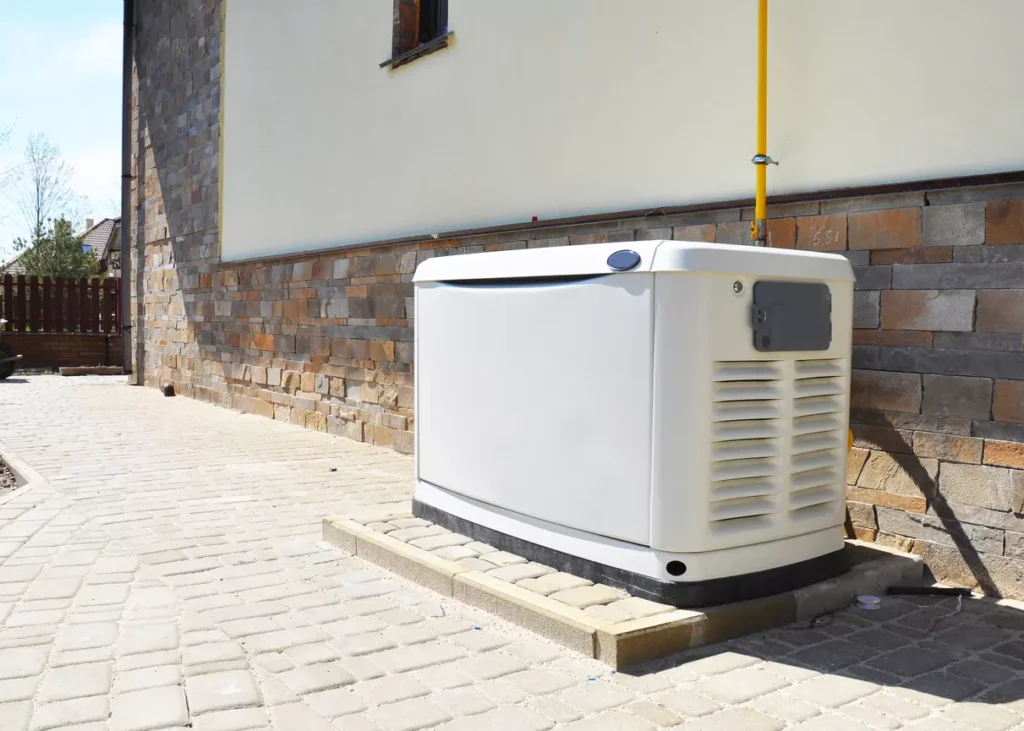
Losing power is not uncommon in the Lehighton area. Between winter ice storms, summer thunderstorms, accidents, and maintenance issues, plenty of things can cause localized outages or more widespread blackouts in Carbon County.
If you want the peace of mind that a reliable emergency power source can provide, consider adding a standby generator to your home. It can keep your home comfortable during the worst weather, ensure your food is properly refrigerated, and provide the power needed for critical medical equipment like oxygen machines or CPAPs.
But a generator must be carefully sized to match your home’s electrical demands to perform at its best. This guide will explain the basics of sizing a standby or whole-home generator. Our team at Andreas Plumbing, Heating & Air Conditioning can help you with all your generator needs in Eastern Pennsylvania.
Understanding Generator Sizes and Your Home’s Needs
The output capacity of a standby or whole-home generator is measured in kilowatts. Small standby generators for your most critical loads may produce 7 to 20 kilowatts, while larger models designed for whole-home use can produce 20 to 48 kilowatts or higher.
The generator must be slightly larger than the anticipated load to keep your appliances and electronics operating smoothly during a power outage. Overloading the generator can harm the generator itself or your appliances.
Assess Your Power Requirements
Sizing a whole-house generator is relatively straightforward. First, determine which appliances and devices you’d like to use during a power outage. This can include critical systems like the furnace or air conditioner, the refrigerator, medical devices, emergency communications, and less important things like televisions, computers, and internet modems.
Then, check the power draw for each item, which is measured in watts. You can typically find the watts on the device’s label or in the owner’s manual. Some items may list only the current in amps and the voltage. In that case, multiply the voltage by the amps to find the wattage.
Add up the wattage of all the devices you’ll be using, then divide by 1,000 to find the total number of kilowatts your home will draw. Multiply that number by 1.25 to add a 25% margin of safety for startup surges and future growth. Your total is the size of the generator you’ll need.
A whole-house generator sizing calculator can help you determine your load more easily. If you still need help, you can turn to Team Andreas to choose the right generator for your home.
Choosing a Generator Size
A generator needs plenty of power to properly operate all the appliances and electronics in your home. Portable generators won’t cut it in most cases. They top out at 10 to 13 kilowatts and are difficult to safely connect to your home.
Standby generators are mounted permanently, have their own fuel sources, such as natural gas or propane, and can offer up to 20 kilowatts for all your most important loads.
Whole-house generators provide up to 48 kilowatts of power or more, and they can power everything in your home. They have extended run times, high reliability, a permanent fuel supply, and an automatic transfer switch for the ultimate safety and convenience.
At Andreas, we’re an authorized installer of Kohler generators, which provide reliable power with some of the most innovative features on the market.
Schedule Generator Services With Team Andreas
Keep your family safe and comfortable during power outages with a whole-house generator from Andreas Plumbing, Heating & Air Conditioning. We can help you select the best model for your home and provide reliable, long-lasting generator installation.
Our company serves homeowners in Carbon, Lehigh, Monroe, Northampton, and Schuylkill Counties, as well as nearby areas of Eastern Pennsylvania. We’re a fourth-generation family-owned business that offers a five-star service guarantee, honest pricing, and excellent financing options.
Contact Team Andreas today to schedule generator services anywhere in Lehighton, PA or the surrounding areas.
